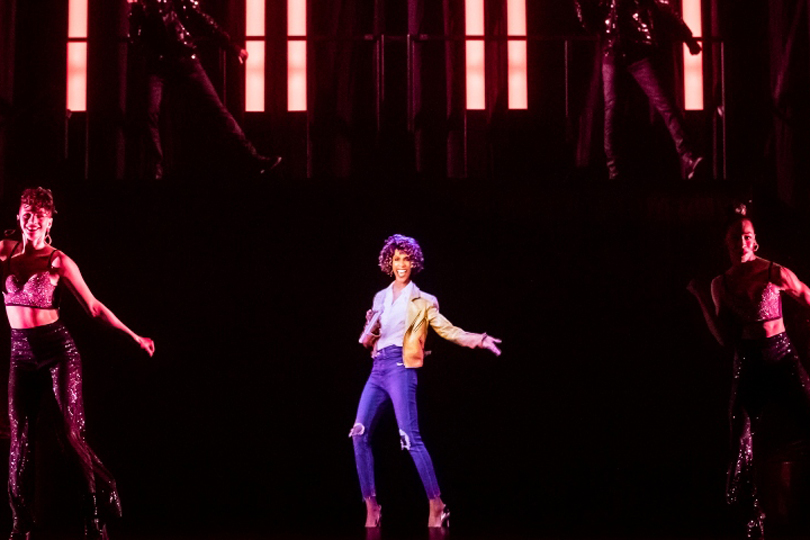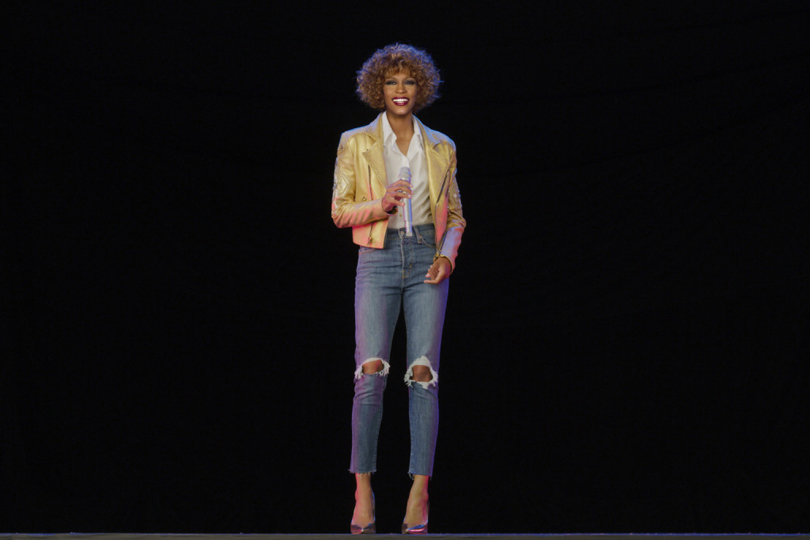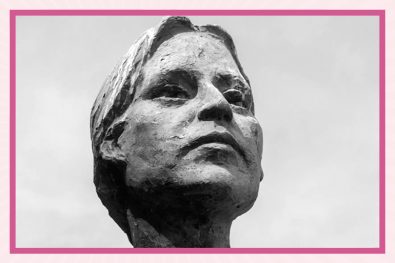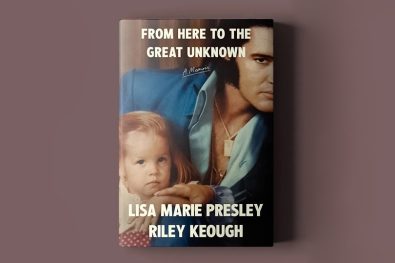As a young girl singing into my hairbrush in the early 1990s, I lived for the holy trinity of pop divas: Celine Dion, Mariah Carey and Whitney Houston (clearly the greatest contemporary vocalists to ever walk the earth, so help me God). Their hair was big, their voices were even bigger and because it was the ‘90s, the fashion was unreal. Years before grunge stole my heart and boy bands sparked my sexual awakening, it was all about those pop divas with their epic power ballads and radio-friendly summer jams.
You could love them all, but Whitney was clearly the queen. If you weren’t obsessed with I Wanna Dance With Somebody, you were lying. (Also, if you’re like me, you’re still obsessed.) I could sing all of the words to Whitney’s self-titled album before I could read or write, and when The Bodyguard came out, it didn’t matter that my friends and I were in elementary school – we were watching it, sex and murders and all. It was a glorious time to be alive.
Flash forward to 2020 and it’s a different world. Celine Dion is on a world tour and still sounds incredible (you better believe I saw her in Toronto a few months ago). Mariah Carey, arguably the most diva of them all, is still hitting those high notes and probably takes a nightly bath in champagne with her much-younger dancer boyfriend. And Whitney – whose incredible ascent was followed by a very public, very tragic decline – is inexplicably on tour as a hologram.
There are so many things to unpack about that last part, so let’s begin.
They say legends never die, and if that’s true, Whitney would certainly be immortal in the world of pop music. She remains one of the best vocalists of all time, but her legacy is complicated. There was family drama, serious drug use, several public scandals, a dysfunctional and abusive marriage, and a very public fall from grace wherein she was mocked mercilessly for both her addictions and the domestic violence she suffered. Even when Whitney made a comeback, she was tabloid fodder – and then, in 2012, she was found dead in a bathtub with cocaine and other drugs in her system. It was a devastating end to a once-promising life and yet, I could go buy tickets to see her in concert this summer. Not the real Whitney, of course, but a computer-generated projection synched up to old concert recordings of her voice. A thing we do now, apparently, when a person of great talent dies.
Let’s be real. I would love to see Whitney Houston on stage in 2020, singing the hits and looking amazing – but it’s not gonna happen. In case it needs to be said, a hologram isn’t actually Whitney Houston. This is something digital that’s been built to replace her, without her consent or knowledge, and certainly not taking into account how the actual Whitney Houston might be faring today if she hadn’t died. It’s purportedly done in celebration, and her family is involved to some extent, but it strikes me as something that does more to erase her than bring her back to life.
Whitney Houston was a giant. She was hugely talented and successful, so of course the world misses her voice – but the thing is, it’s not as simple as resurrecting her with technology. This is a woman who was exploited in life and died alone under very sad circumstances. She continues to be exploited years after her death. When Whitney Houston performs on stage in a fabricated, digital format, it feels like we’re glossing over her real life struggle and removing the impact of her loss. Looking at a beaming, healthy image of Whitney on stage might make for a fun night out, but it’s not a reflection of what this woman actually went through or what a genuine loss her death was. Shouldn’t we want to feel that impact and learn from it, or at least acknowledge it, rather than fill the hole with a false version of her? Whitney wasn’t just a voice on the radio; she was a human being with both flaws and people who loved her. Is this what we do now – watch people suffer addiction, abuse and ridicule and then, when they’re gone, resurrect them for profit? (After all, dead pop stars are a lot easier to manage than troubled live ones.)
In a word, this whole thing is gross.

This hologram tour tries to create the version of Whitney Houston we wanted – the happy, healthy Whitney we believed in early on – and buries the reality of her pain and death. That should make us feel uncomfortable at best, and probably much worse. Death doesn’t have the same weight when the elements of a person that entertain and excite us can be plucked up and repurposed while we ignore the rest. It devalues people and lacks integrity – so why do we want it? What does that mean about us as a society, if we make this a regular thing? Do we do Amy Winehouse next? I mean, we already did Tupac.
(I’m not even going to get into how creepy and nightmarish the hologram seems to be, but if I may throw an idea out there, it’s this: maybe science could get back to finding a cure for cancer and leave dead celebrities alone?)
Bad things happen, people die and it sucks, but it’s not a reason to bring them back from the dead – especially not when it erases that person’s truth. We can honour a celebrity’s memory and treat them with respect instead of creating creepy, idealistic, performative illusions for monetary gain. Personally, I’d rather give my money to a shelter for victims of domestic violence or an addictions treatment centre than pay to see a hologram of an icon who was gone too soon. It feels wrong and honestly, a legend like Whitney deserves better.











